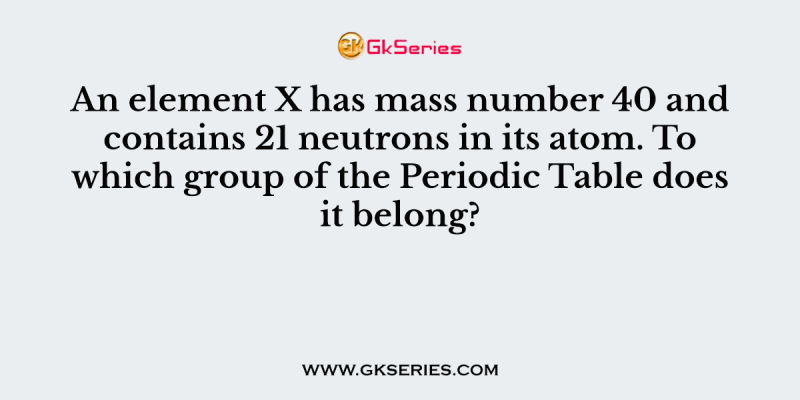
An element X has mass number 40 and contains 21 neutrons in its atom. To which group of the Periodic Table does it belong?
READ MORE +
An element X has mass number 40 and contains 21 neutrons in its atom. To which group of the Periodic Table does it belong?
READ MORE +
Pick out the chemically most reactive elements from the given triads
READ MORE +
An element X combines with oxygen to form an oxide XO. This oxide is electrically con¬ducting. Write the formula of the compound formed when X reacts with chlorine.
READ MORE +
Name the neutral atom in the Periodic Table which has the same number of electrons as K+ and Cl-
READ MORE +
A metal ‘M’ is in the first group of the Periodic Table. What will be the formula of its oxide?
READ MORE +
The elements A, B and C belong to groups 1, 14 and 17 respectively of the Periodic Table. Which two elements will form ionic compounds?
READ MORE +
Carbon belongs to the second period and Group 14. Silicon belongs to the third period and Group 14. If atomic number of carbon is 6, the atomic number of silicon is
READ MORE +
Which one of the following statements is not correct about the trends in the properties of the elements of a period on going from left to right?
READ MORE +
What is the atomic number of element of period 3 and group 17 of the Periodic Table?
READ MORE +
Which of these belong to the same period?
READ MORE +
An atom of an element has the electronic confi-guration 2,8,2. To which group does it belong?
READ MORE +
Element ‘X’ forms a chloride with the formula XCl2, which is a solid with high melting point. X would most likely be in the same group of the periodic table as
READ MORE +